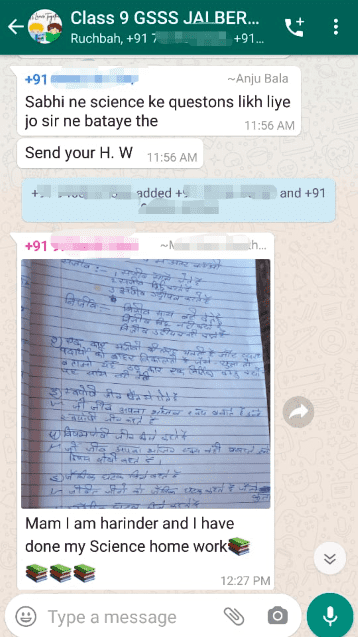With the onset of the COVID pandemic in India and the prolonged lockdown, offices throughout the country transitioned to working remotely over the last 2 months. Working from home is an unfamiliar concept for most government employees. Given that most important documents are stored in paper files and soft copies of documents rarely have cloud backups for remote access, the transition to working from home was uncharted territory for government officials.
The Education Department in Haryana, which is the largest department in the state employing approximately 1 lakh teachers, faced two challenges during this time.
- How do teachers and principals of government schools facilitate continuation of students’ education remotely?
- How do officers in the state head office and district offices manage a remote learning programme in the 14,000+ government schools in the state?
Remote learning
Under Saksham Haryana, the state’s flagship education transformation programme, over a period of 2.5 years, robust WhatsApp communication channels have been set up and institutionalized to ensure the Department is in direct contact with all teachers in the state. Within two weeks of the lockdown, all teachers were directed to collect the phone numbers of their students’ parents and add them to WhatsApp groups to remain in regular contact with students. This WhatsApp communication channel of linking the Department to teachers and teachers to parents enabled the launch of a state-wide e-learning campaign - "Ghar se Padhao" - where grade-wise academic and recreational content is sent from the state directly to all teachers daily.
Students and parents are sending images of daily homework to teachers on WhatsApp, which is being checked and sent back with feedback. In addition, several government school teachers have taken the initiative of conducting classes using video conferencing tools such as Zoom and Facebook Live and conducting assessments using Google Forms. Owing to this direct contact, parents now receive regular updates about their child’s education and performance.
This new system of remote schooling, set up as a stop-gap arrangement, has certain critical elements which can continue to strengthen public education in the medium to long term.
- When schools reopen, they might do so in phases, with half or a third of student strength at any given time. Which means parent-teacher WhatsApp groups can continue to be used to facilitate remote learning and teacher feedback on homework.
- Parents will also be able to receive regular updates regarding their child’s performance and any important functional information such as school closure dates from the school’s administration.
Remote review & monitoring
Managing the performance of 14,000+ government schools requires a robust system of review and monitoring. In Haryana, a multi-level system of reviews has been set up at the state, district, block, and cluster level. Every month, DCs in each district review progress under Saksham Haryana which is attended by all block and cluster level resource persons (also referred to as mentors), block education officers, and district education officers. In a district such as Bhiwani, officials from Siwani block may have to travel over 70 km each way to reach the district headquarters for a review meeting. Several such district level meetings take place every month, leading to hours of productive time being spent in travel every week.
While video conferencing tools to facilitate remote meetings have existed for several years, their large scale implementation in a government set up seemed impractical. However, the imposed lockdown drove rapid adoption of these tools among Education Department stakeholders at a rapid pace. For launching the Ghar se Padhao campaign, a state level video conference (VC) with over 250 district and block officers was conducted without a glitch. In districts, Zoom meetings with teachers, school principals, and mentors have become commonplace for monitoring of remote learning initiatives.
This newly developed familiarity with video conferencing tools can enable more and more meetings in government departments to be remotely managed, thus saving travel time and increasing efficiency of work.

